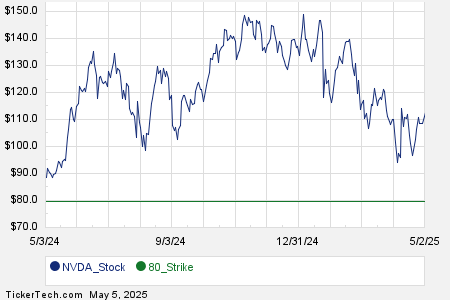Top Stocks to Invest $1,000 In for Long-Term Returns
When choosing stocks for a lifetime investment, focusing on exceptional companies is crucial. Given the current market uncertainty, this approach is especially pertinent.
Investors often find that standout companies offer services appealing to a wide audience, particularly those using a subscription model. Such businesses typically enjoy higher valuations because of their predictable revenue streams.
Why Consider Microsoft and Netflix?
Microsoft (NASDAQ: MSFT) and Netflix (NASDAQ: NFLX) represent elite growth stocks that fit this mold. Below are reasons why these stocks could continue to provide robust returns.

Image source: Getty Images.
1. Microsoft
Microsoft stands out as a financially robust company delivering essential software services. With a large user base from Windows and being the second-largest cloud services provider, it shows strong growth potential. Last quarter, Azure, its cloud division, exhibited impressive growth, indicating continued advancements in artificial intelligence (AI) services despite economic challenges expected in 2025.
Over the past decade, the company transitioned from making money through one-time software sales to a cloud-based subscription model. Together, revenue from Azure and the Microsoft 365 office suite reached $42 billion last quarter, marking a 20% year-over-year increase.
Partnerships, especially with OpenAI, have spurred this growth. Azure’s revenue increased by 33% year-over-year last quarter, exceeding broader cloud market growth.
Microsoft is well-positioned as a leader in AI. In 2022, over 1.4 billion Windows 10 and Windows 11 devices were reported in use. Additionally, more than 400 million businesses use Microsoft 365, creating ample opportunities for adopting the Copilot AI assistant.
With $96 billion in net income from $270 billion in revenue over the last four quarters, Microsoft’s recurring revenue model makes it a relatively safe growth investment. Analysts anticipate earnings per share to grow by 12% annually in the coming years.
2. Netflix
Netflix has reached new heights by showcasing strong first-quarter financial results. Following several years of double-digit growth in revenue and membership, the company has significant potential for long-term expansion.
Netflix remains a highly profitable subscription-based business. In Q1, the company posted a revenue increase of 12% year over year, with guidance suggesting 15% growth in Q2, driven by anticipated new content from popular series.
The platform now boasts over 300 million paid members. Its recent paid sharing initiative has further contributed to membership growth. Strong financial results reflect Netflix’s ability to provide compelling content, enhancing its long-term outlook.
As an entertainment powerhouse, Netflix invests heavily in content. Last year, it allocated $17 billion for new films and shows, maintaining its growth trajectory and supporting higher shareholder returns. Over the past year, the business generated $9 billion in net income from $40 billion in revenue, achieving nearly a 25% profit margin. Analysts expect improvements in margins will yield earnings growth of 23% annually over the next several years.
Should You Invest $1,000 in Microsoft or Netflix?
Before investing in stocks like Microsoft, consider this:
The Motley Fool team recently highlighted what they consider the 10 best stocks for investors right now, notably excluding Microsoft. These stocks have potential for significant returns over the coming years.
Reflecting on past recommendations, when Netflix made the list on December 17, 2004, a $1,000 investment would have grown to $623,685! Similarly, Nvidia, added to the list on April 15, 2005, would have turned $1,000 into $701,781!
The Motley Fool has historically seen an average return of 906%, significantly outperforming the S&P 500’s 164%.
*Stock Advisor returns as of May 5, 2025
John Ballard has no positions in the mentioned stocks. The Motley Fool has investment positions in and recommends Microsoft and Netflix.
The views and opinions expressed herein are those of the author and do not necessarily reflect the views of Nasdaq, Inc.


